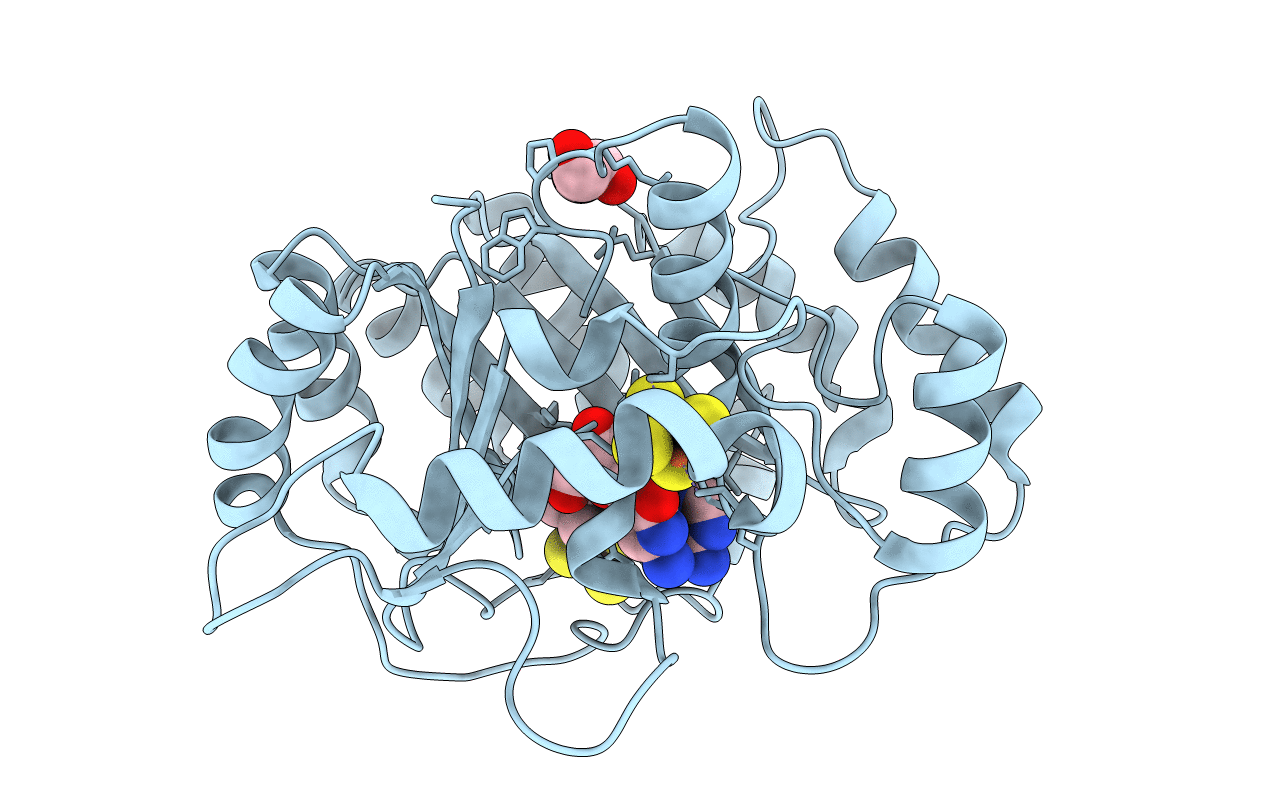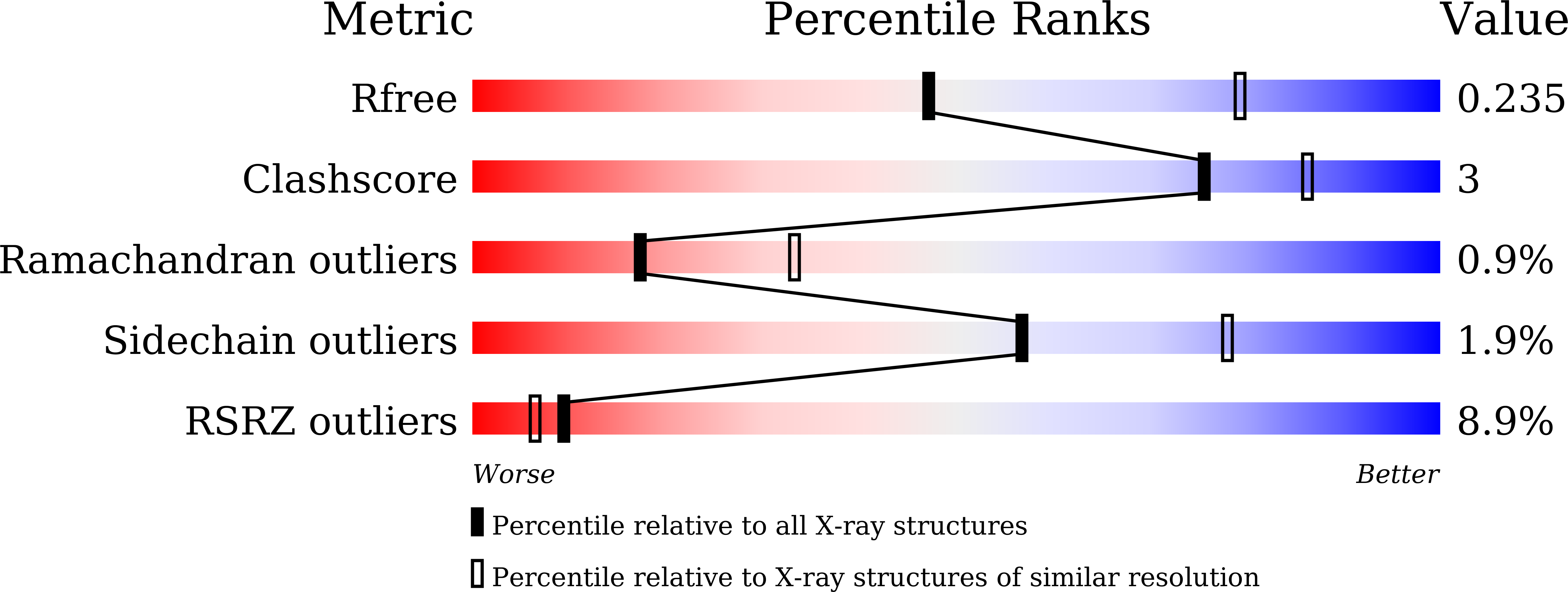
Deposition Date
2021-10-13
Release Date
2022-05-04
Last Version Date
2023-11-29
Entry Detail
PDB ID:
7VOC
Keywords:
Title:
The crystal structure of a Radical SAM Enzyme BlsE involved in the Biosynthesis of Blasticidin S
Biological Source:
Source Organism:
Streptomyces griseochromogenes (Taxon ID: 68214)
Host Organism:
Method Details:
Experimental Method:
Resolution:
2.62 Å
R-Value Free:
0.23
R-Value Work:
0.21
R-Value Observed:
0.21
Space Group:
I 41 2 2


